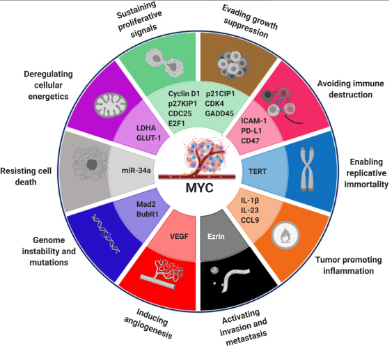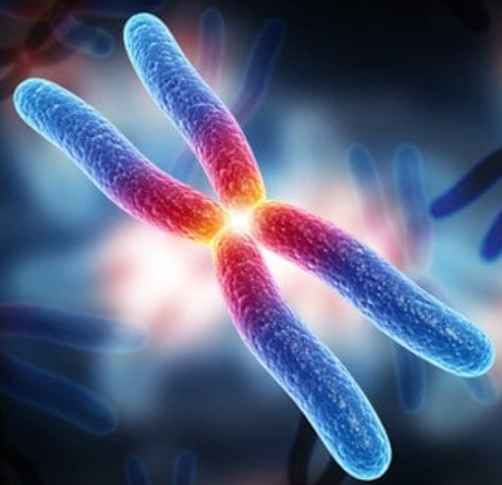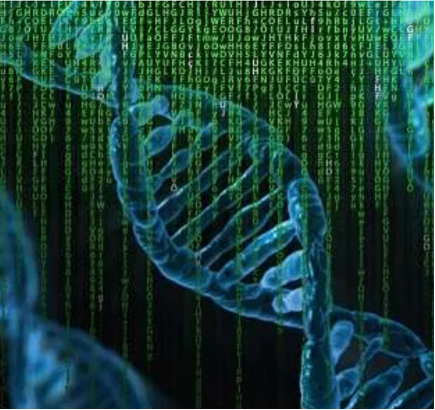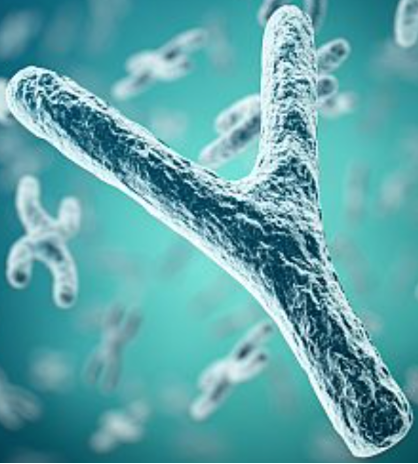The tumor is a gene-related disease; in fact, it is due to the accumulation of mutations on genes that control the balance between cell proliferation and differentiation.
Cancer cells with a proliferative advantage will be selected, a selection analogous to the concept proposed by Darwin.
Genes of our interest will be oncogenes, oncosuppressors, and genes involved in DNA damage repair. In this first part, the focus will be on oncogenes.
These types of genes, in response to growth signals, the “mitogens,” induce the cell to divide, so they are crucial in cell proliferation.
In a cancer cell, mutations occur in these genes, so the cell will overproliferate.
In addition, oncogenes are haploinsufficient, it means that a single mutation event increases the activity of one of the two copies of the gene; it is a gain-of-function mutation.
The MYC gene is an example.
MYC is a proto-oncogene that codes for its homologous protein. MYC, after mutation, is expressed at nonphysiological levels and becomes an oncogene, in fact it is found to be over-expressed in some human leukemias such as Burkitt’s lymphoma.
In these cases MYC is found to be regulated by a region that is easily targeted by mutations, this is reflected in the expression of MYC itself.
Mutations can go to regions of MYC recognized by p53, an oncosuppressor. P53 has the function of sequestering the MYC protein once it has done its function, but if it cannot have interactions then it cannot do its job and MYC will be present at excessive levels.

It has been noted that oncogenes can cooperate so that their effect is amplified.
Through experiments in a mouse model, the cooperation between MYC and RAS, an oncogene, was verified.
In the first case, only the mutated form of RAS was inserted into the mouse, and tumor development was obtained in 50% of cases.
In the second case only the mutated form of MYC was inserted, and in this case tumor development was detected in 25% of the mice.
In the third case both MYC and RAS mutated were inserted, the latter experiment obtained 100% tumor development.
Multiple mutation events are required to have tumor development; if a cell has already been targeted by a first mutation event then it is very probable that it will be targeted by a second one.
We understand how much the genetic component also contributes to making a tumor so complex.




